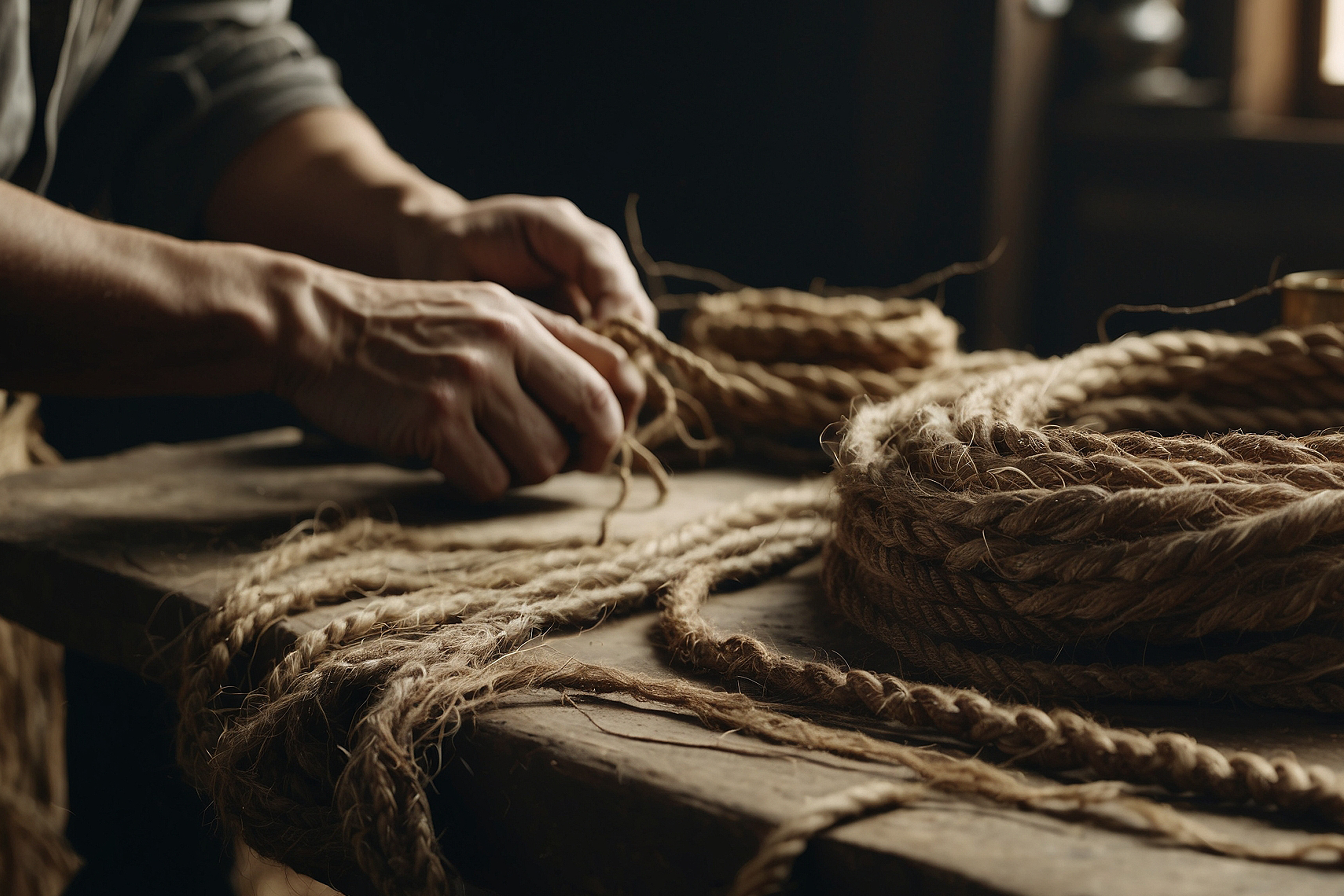A Handicraft:
Rope making is an old craft in Madinah. The craft of making ropes from unproductive palm tree fibers involves manual skills such as twisting the fibers. The ropes are used for various purposes such as tying and dragging fronds, tying home utensils together, and letting down dateclusters from the top of palm trees.
Craft Tools:
A group of craftsmen in Madinah practiced this craft. A rope maker was locally known as
msharritor
maddad. Rope makers ensured that their products were abrasion-resistant and durable. They used the carding machine to comb fibers and arrange them in parallel lines.
Palm-Related Craft:
Rope making has been known for centuries in Madinah, which is considered one of the most famous palm tree habitats. The people of Madinah were also accustomed to making use of natural resources to make tools suitable to their daily lives.
How are ropes made?
The process of rope making is very demanding and arduous tasks. A rope maker uses his hand palms to twist palm fibers. These fibers have been soaked in water to soften. When the soaked fibers become malleable, stiff ones are excluded. Long strands are laid together and twisted, with new threads added to make a long rope.
The Craft Between Extinction and Preservation of Heritage:
The craft of rope-making has lostpopularity due to the presence of modern tools in industry and the decline of both handicrafts and their impact on society. The craft survives today only as an aspect of traditional heritage which is being passed to the next generation through cultural festivals and traditional markets, under the auspices of the concerned authorities in the Kingdom.
The Craft and Heritage Festivals:
Today some traditional rope makers still practice their manual craft. Products of this craft can be found in traditional markets and heritage festivals. Creative rope products including chairs made of cannabis ropes, and other craft products are sold there.
to the next generation through cultural festivals and traditional markets.
